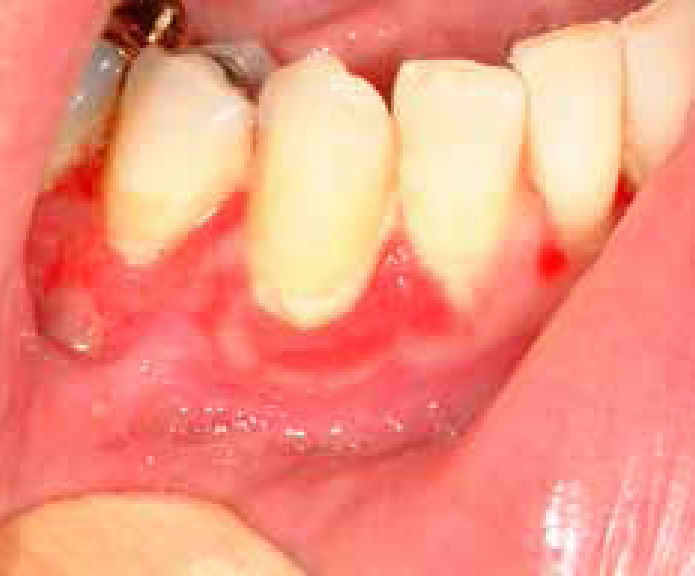Article


A 57-year-old IT negotiator complained of tender gums generally, first noticed about 5 years previously. The condition was persistent, worsening through the day, and sometimes associated with gingival bleeding and a salty taste. The condition was worse in the anterior mandible, and always facially. He denied any blistering or ulcers on the gingivae or elsewhere. Treatment with benzydamine and chlorhexidine mouthwashes and low dose corticosteroid mouthrinses (betametasone) had not significantly improved his symptoms.
There were no cutaneous, gastro-intestinal, genital, ocular or joint problems (apart from traumatic arthritis) and no history of fever. The medical history included knee arthritis from sports. He had a family history of hypercholesterolaemia. There were no other cardiorespiratory or bleeding problems. The patient was on medication with citalopram (for a work-related stress episode) and simvastatin, and had no known allergies. The social history included no tobacco use but alcohol consumption at 60 units weekly. Liver function had been normal when tested twice in the past year.
Extra-oral examination revealed no significant abnormalities and specifically no pyrexia, cervical lymph node enlargement, nor cranial nerve, salivary or temporomandibular joint abnormalities. He had masseteric hyperplasia bilaterally.
Oral examination revealed a dentition which was well preserved. There was clinical evidence of periodontal attachment loss and pocketing. He had extensive desquamation in several areas both facially (Figure 1) and lingually/palatally, with erosions bilaterally, especially posteriorly, and also palatal to the maxillary molars. Plaque control was lacking. Examination of the mucosae showed no other lesions except a crenated tongue margin.

What is the single most likely diagnosis?
The answer to what is the single most likely diagnosis?
d) Vesiculobullous disease: this can involve the gingivae in middle-age, causing chronic erythema and desquamation. The absence of skin or other mucosal lesions here suggests pemphigoid rather than pemphigus. The history and clinical findings were most consistent with a diagnosis of mucous membrane pemphigoid, since there were, and had been, no other lesions orally or elsewhere. However, it would be prudent to exclude pemphigus by biopsy/immunostaining. The patient had pemphigoid and was treated initially with a betametasone mouthwash at least 3 times daily for at least 3 minutes each time, for one month, with oral hygiene instruction, as plaque aggravated the symptoms. His GDP constructed soft acrylic full coverage splints extending into the sulci, for use of steroid (clobetasol) ointment overnight; this helped suppress the symptoms. An ophthalmological opinion was arranged, since conjunctival lesions may arise in some patients with pemphigoid.
